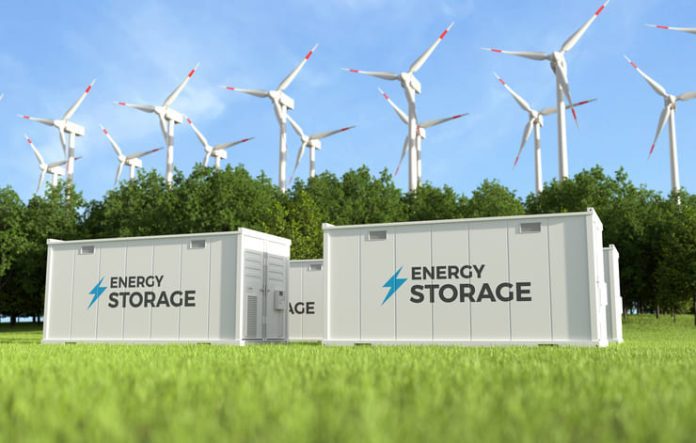Efficient power management is more crucial than ever amid rising demand and climate change. This is where energy storage systems play a starring role. By banking excess electricity and discharging it on demand, energy storage balances supply and demand, boosts grid reliability, integrates renewables, and more.
In this article, we’ll explore the critical importance of energy storage for power management today and tomorrow. We’ll look at what energy storage is, its evolving technologies, and how it promises to enable the flexible, resilient grids of the future.
Energy storage sits at the heart of solutions for sustainable power. So, with the help of Resustain.com, let’s examine why it’s so indispensable.
Understanding Energy Storage
So how exactly does energy storage work? Fundamentally, it involves capturing energy produced at one time, storing it in some medium, and then deploying it for use at a later time.
This allows us to effectively “shift” energy from periods of low demand to periods of high demand.
There are several ways to store energy, each with its own characteristics, advantages and ideal use cases:
Mechanical Storage
- Stores energy by using it to pump water uphill into a reservoir, then releasing the water through turbines to produce electricity when needed. Also called “pumped hydro.”
- Ideal for large-scale, long-duration storage to balance supply and demand.
- Limited potential sites and high costs are drawbacks.
Electrochemical Storage
- Stores energy chemically in batteries. Lithium-ion batteries dominate for grid applications.
- High efficiency and energy density make batteries ideal for short to medium term storage needs.
- Battery costs have declined but remain relatively high. Chemistries are constantly improving.
Thermal Storage
- Stores energy by heating or cooling a storage medium like molten salt or water.
- Low cost and abundant storage capacity, but geographic constraints.
- Used for storing excess renewable energy and more.
| Storage Type | Duration | Location | Maturity |
| Pumped Hydro | Hours-Months | Fixed | Mature |
| Compressed Air | Hours-Days | Fixed | Developing |
| Batteries | Minutes-Hours | Many | Mature |
| Flywheels | Seconds-Minutes | Many | Developing |
| Thermal | Hours-Days | Fixed | Developing |
Balancing Supply and Demand
One of the most valuable applications of energy storage is balancing electricity supply and demand. Supply and demand must be balanced in real time to maintain grid stability. However, electricity demand fluctuates throughout the day.
For example, demand peaks during the early evening when people get home from work and turn on lights, appliances, TVs, etc. Supply struggles to keep up, often forcing dirtier and costlier “peaker” power plants to come online to meet demand.
Energy storage helps avoid this in several ways:
- It can charge up during periods of low demand such as at night. This takes advantage of extra generation capacity or cheaper electricity.
- The stored energy can then be discharged during peak hours to help meet spiking demand. This is cleaner and less expensive than peaker plants.
- Renewable sources like solar only generate when the sun is shining. Energy storage allows capturing this intermittent production for use 24/7.
- By shifting the load, energy storage flattens spikes and valleys in electricity demand. This results in more efficient use of power infrastructure.
Enhancing Grid Stability and Reliability
Energy storage strengthens grid stability and reliability in numerous key ways. Firstly, it provides vital frequency regulation by rapidly charging or discharging to maintain steady grid frequency within safe operating ranges. This balances generation with fluctuating load. Energy storage is ideal for cost-effective frequency regulation due to its fast responsiveness.
Additionally, energy storage helps smooth out voltage levels and avoid harmful spikes and drops. It does this by intelligently modulating the timing and rate of charge and discharge. Keeping voltage within tight bounds is crucial for protecting equipment and ensuring quality power.
Energy storage also offers supplemental operating reserves that can instantly respond when generation is lost or load changes unexpectedly. Having these fast-acting reserves on call significantly enhances system resilience and reliability.
Furthermore, energy storage offers black start capabilities to help restore power after outages by energising the grid as generators come back online. This ability to quickly reboot the grid is extremely valuable.
Facilitating Renewable Energy Integration
Expanding renewable energy is vital for a sustainable future. However, the variable, intermittent nature of renewables like wind and solar poses grid integration challenges. This is another area where energy storage shines:
- It can store excess renewable generation when output exceeds demand, and discharge when demand later increases.
- This in effect helps “smooth” the variability of renewables and makes their output more grid-friendly.
- Storage also allows shifting renewable energy to different times of day when it’s most useful.
- Short term storage helps mitigate sub-minute fluctuations and enable stable renewable integration.
- By absorbing excess renewable energy, storage avoids curtailing (wasting) green power generation at times.
- Energy storage coupled with renewables can provide reliable off-grid electricity solutions.
Innovations and Future Directions
The energy storage landscape continues to experience rapid innovation and development. Exciting new technologies are emerging while costs are declining across many existing storage methods.
This constant evolution promises to expand the applications of energy storage and enable it to play an even greater role in building smart, resilient and sustainable electric grids. From cutting-edge battery chemistries to artificial intelligence integration, energy storage is brimming with new potential.
Some key areas of innovation and future directions for energy storage include:
- New storage technologies like flow batteries and compressed air storage that provide utility-scale solutions.
- Improvements in established technologies like lithium-ion batteries, lowering costs and improving performance.
- Hybrid storage systems optimise advantages by combining storage types.
- Integration of artificial intelligence to optimise storage operation and predictive maintenance.
- Small-scale customer storage systems creating new behind-the-metre applications.
Conclusion
Energy storage promises to transform electricity generation, management and consumption as costs decline and technology evolves. Ongoing advances are enabling greater renewable energy penetration, enhanced resilience against outages, reduced energy waste, optimised asset utilisation, and much more.
With impressive growth and cost improvements underway, energy storage is positioned to play an indispensable role in affordable, sustainable power management. This bodes well for achieving the balanced energy future we need.
Energy storage is already indispensable for balancing electricity supply and demand, integrating renewable power sources, and strengthening grid reliability. Looking ahead, its role is poised to expand exponentially as innovations continue.



































